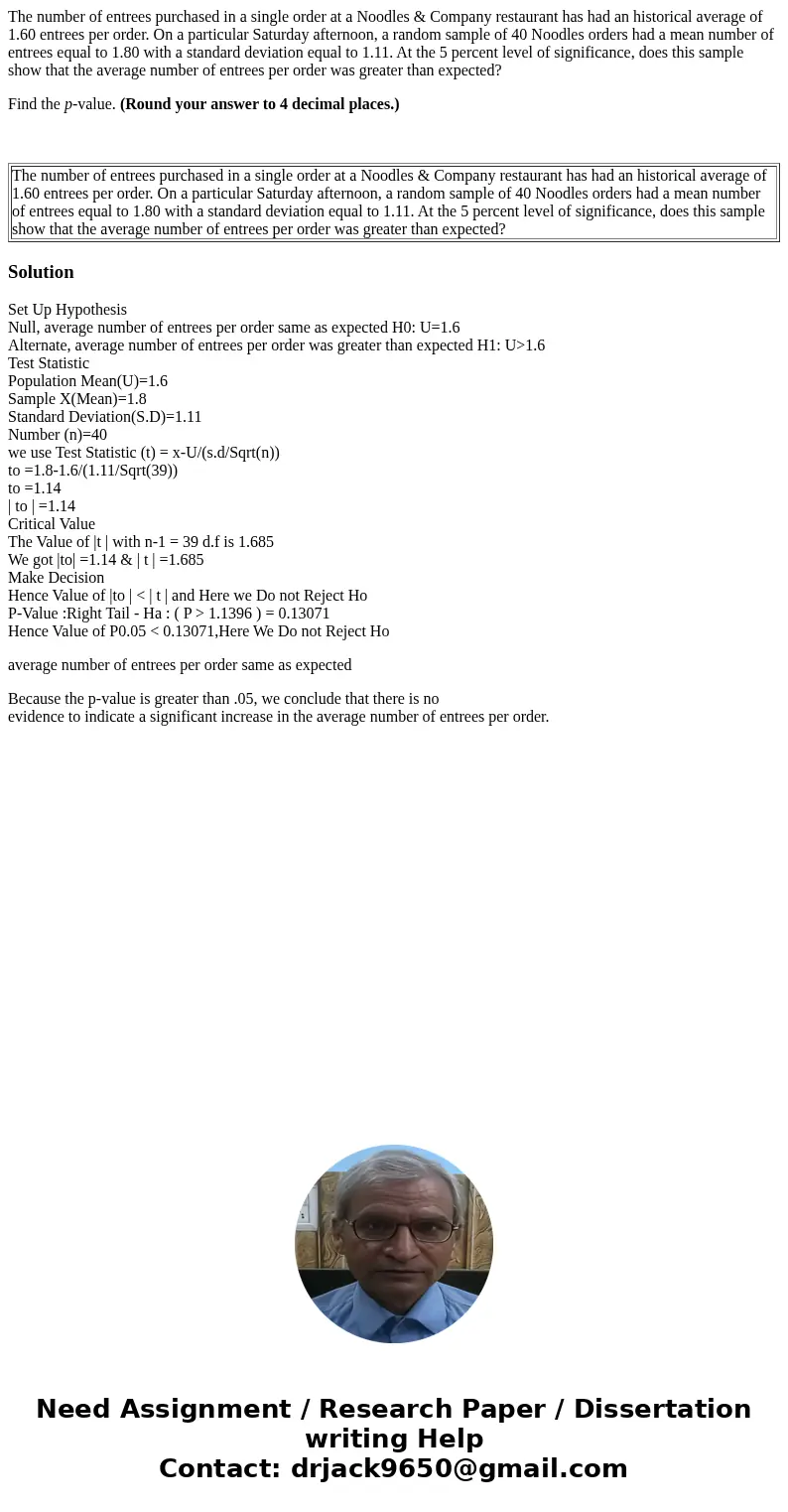The number of entrees purchased in a single order at a Noodl
The number of entrees purchased in a single order at a Noodles & Company restaurant has had an historical average of 1.60 entrees per order. On a particular Saturday afternoon, a random sample of 40 Noodles orders had a mean number of entrees equal to 1.80 with a standard deviation equal to 1.11. At the 5 percent level of significance, does this sample show that the average number of entrees per order was greater than expected?
Find the p-value. (Round your answer to 4 decimal places.)
| The number of entrees purchased in a single order at a Noodles & Company restaurant has had an historical average of 1.60 entrees per order. On a particular Saturday afternoon, a random sample of 40 Noodles orders had a mean number of entrees equal to 1.80 with a standard deviation equal to 1.11. At the 5 percent level of significance, does this sample show that the average number of entrees per order was greater than expected? |
Solution
Set Up Hypothesis
Null, average number of entrees per order same as expected H0: U=1.6
Alternate, average number of entrees per order was greater than expected H1: U>1.6
Test Statistic
Population Mean(U)=1.6
Sample X(Mean)=1.8
Standard Deviation(S.D)=1.11
Number (n)=40
we use Test Statistic (t) = x-U/(s.d/Sqrt(n))
to =1.8-1.6/(1.11/Sqrt(39))
to =1.14
| to | =1.14
Critical Value
The Value of |t | with n-1 = 39 d.f is 1.685
We got |to| =1.14 & | t | =1.685
Make Decision
Hence Value of |to | < | t | and Here we Do not Reject Ho
P-Value :Right Tail - Ha : ( P > 1.1396 ) = 0.13071
Hence Value of P0.05 < 0.13071,Here We Do not Reject Ho
average number of entrees per order same as expected
Because the p-value is greater than .05, we conclude that there is no
evidence to indicate a significant increase in the average number of entrees per order.

 Homework Sourse
Homework Sourse